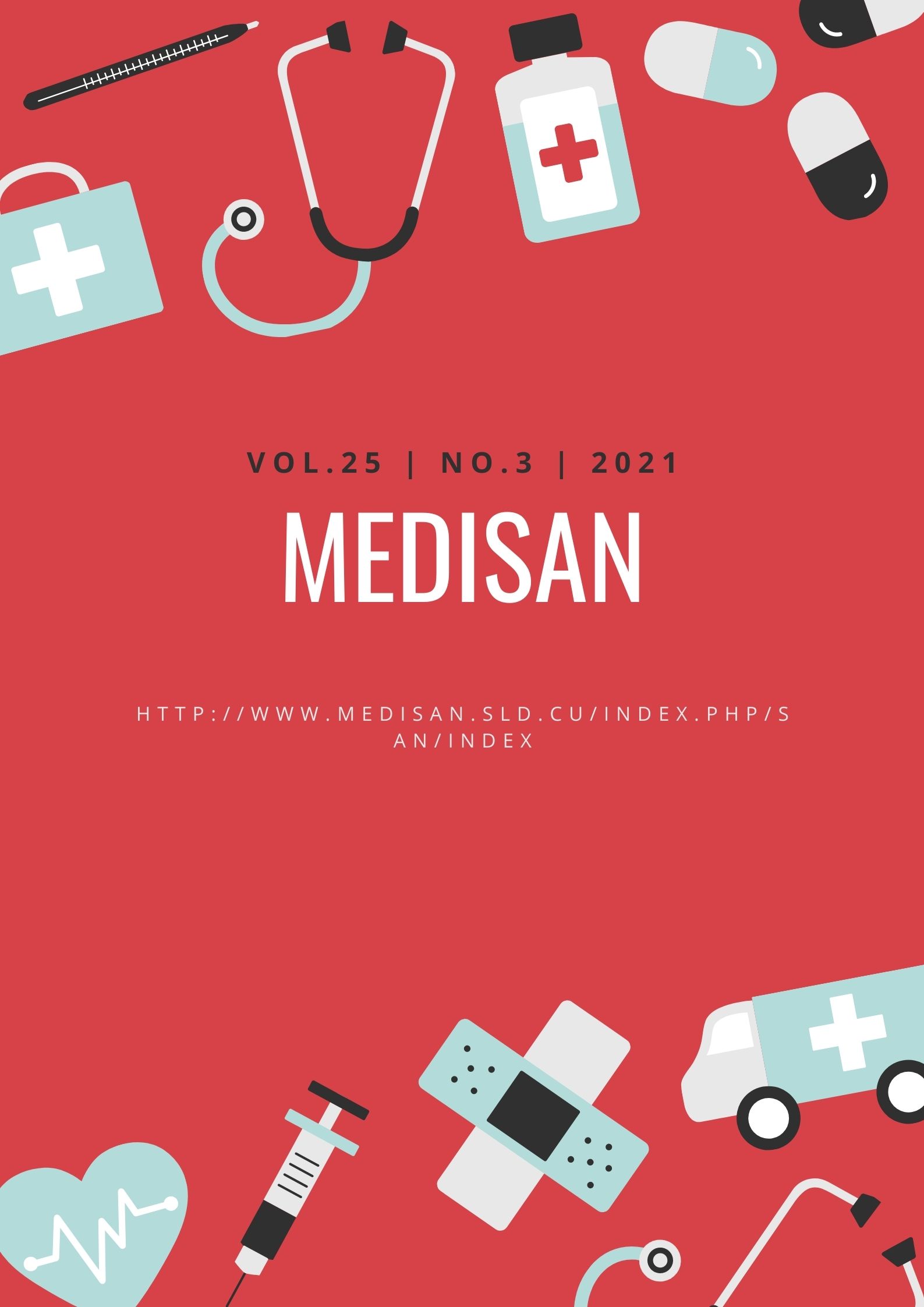Evaluation of sheep blood as nutritive suplement in culture media: citratated and defibrinated
Keywords:
sheep citrated blood, sheep dehidratated blood, bacterial growth, hemolysis, bacterial isolation.Abstract
Introduction: Sheep blood is an essential supplement in the elaboration of culture media, as it provides important nutritional factors for the growth and recovery of different organisms.
Objective: To evaluate comparatively the effect of sheep citrated and defibrinated sheep blood in culture media with agar base as for the bacterial growth and the production of hemolysis in reference strains from different pathogen bacteria, as well as the recovery or isolation of microorganisms from clinical samples.
Method: An observational, descriptive and cross-sectional was carried out in 6 microbiology laboratories in Santiago de Cuba city during 2017, in which male sheeps blood from the pelibuey breed for elaborating culture media. Each laboratory received either citrated blood or defibrinated and a survey was delivered to evaluate the results.
Results: There was a better growing and bacterial isolation in the media supplemented with defibrinated blood, although yielding or results were favorable with citrated blood.
Conclusions: The pertinence of the use of defibrinated blood as a supplement of nutritive enrichment in culture media was confirmed; however, the use of citrated blood was demonstrated in the routine work of the clinical microbiology laboratory.
Downloads
References
2. Niederstebruch N, Doris Sixt, Benard Isah Benda, Nestor Banboye. A suitable blood agar containing human blood especially for the use in laboratories of developing countries. J Infect Dev Ctries. 2017 [citado 20/05/2019];11(5):399-406. Disponible en: https://jidc.org/index.php/journal/article/view/30943176/1702
3. Felcaro MV. Streptococcus pyogenes beta hemolítico del grupo A. NotiWiener Digital. 2016 Sep [citado 20/05/2019]. Disponible en: https://notiwiener.net/2016/09/streptococcus-pyogenes-%CE%B2-hemolitico-del-grupo-a/
4. Leiva J, Del Pozo JL. Bacilos gramnegativos de crecimiento lento: grupo HACEK, Capnocytophaga y Pasteurella. Enferm Infecc Microbiol Clin. 2017 [citado 20/05/2019];35(Supl 3):29-43. Disponible en: https://www.elsevier.es/es-revista-enfermedades-infecciosas-microbiologia-clinica-28-pdf-X0213005X17617194
5. Barrero Cuevas L. Microbiología Clínica. Madrid: Editorial Síntesis; 2016 [citado 20/05/2019]. Disponible en: https://www.sintesis.com/data/indices/9788490773185.pdf
6. Rosner R. Effect of various anticoagulants and no anticoagulants on ability to isolate bacteria directly from parallel clinical blood specimens. Am Jour Clin Path. 1967;49(2):216-9.
7. Evans GL, Cekoric T, Searcy RL. Comparative effects of anticoagulants on bacterial growth in experimental blood culture. Am Jour Med Tec. 1968;34(2):103-12.
8. Núñez TMC, Wilson TMM, Zaror TML. Evaluación del efecto de dos anticoagulantes sobre el desarrollo bacteriano en hemocultivos. Rev Chil Pediatr. 1979 [citado 20/05/2019];50(1). Disponible en: https://scielo.conicyt.cl/pdf/rcp/v50n1/art05.pdf
9. Russell FM, Biribo SSN, Selvaraj G, Oppedisano F, Warren S, et al. As a bacterial medium, citrated hair sheep blood agar is a practical alternative to citrated human blood agar in laboratories in developing countries. J Clin Micro. 2006;44:3346–51.
10. Yeh E, Pinsky BA, Banaei N, Baron EJ. Hair Sheep Blood, Citrated or Defibrinated, Fulfills All Requirements of Blood Agar for Diagnostic Microbiology Laboratory Tests. PLoS One. 2009 [citado 20/05/2019];4(7):e6141. Disponible en: https://www.ncbi.nlm.nih.gov/pmc/articles/PMC2700971/
11. Cano Corales KA, Ugarte Córdoba AM. Evaluación del medio de cultivo agar sangre humana con glóbulos rojos lavados para el desarrollo de cepas de Streptococcus agalactiae [tesis de grado]. Lima: Universidad de Norbert Wiener; 2020 [citado 20/05/2019]. Disponible en: http://repositorio.uwiener.edu.pe/bitstream/handle/123456789/3972/T061_45200035_45987150_T.pdf?sequence=1&isAllowed=y
12. Vila J, Gómez MD, Salavert M, Bosch J. Métodos de diagnóstico rápido en microbiología clínica: necesidades clínicas. Enferm Infecc Microbiol Clin. 2017 [citado 20/05/2019];35(1):41-6. Disponible en: https://www.elsevier.es/es-revista-enfermedades-infecciosas-microbiologia-clinica-28-articulo-metodos-diagnostico-rapido-microbiologia-clinica-S0213005X16303500
13. TCM. ¿Qué son las Cepas ATCC? Publicación Digital. 2020 [citado 20/05/2019]. Disponible en: https://www.tcmetrologia.com/blog/que-son-las-cepas-atcc/
14. Aske KC, Waugh CA. Expanding the 3R principles. More rigour and transparency in research using animals. EMBO Reports. 2017;18(9):1490-2.
15. Soriano Cabré M. Estudio de las alteraciones hematológicas en ovejas afectadas por diferentes patologías [tesis de grado]. Zaragoza: Universidad de Zaragoza; 2016 [citado 20/05/2019]. Disponible en: https://zaguan.unizar.es/record/60450/files/TAZ-TFG-2017-074.pdf
16. National Institutes of Health; U.S. National Library of Medicine. LABEL: CPDA-1- anticoagulant citrate phosphate dextrose adenine solution. DailyMed. 2019 Nov [citado 20/05/2019]. Disponible en: https://dailymed.nlm.nih.gov/dailymed/drugInfo.cfm?setid=55b6d4f4-553c-409c-b5b2-44aaffcf5048
17. dos Santos Dias L, Soares da Rocha Bauzer LG, Pereira Lima JB. Artificial blood feeding for Culicidae colony maintenance in laboratorie: does the blood source condition matter? Rev Inst Med Trop São Paulo. 2018 [citado 20/05/2019];60:e45. Disponible en: https://doi.org/10.1590/S1678-9946201860045
18. Sánchez-Neira Y, Angarita-Merchán M. Determinación de hemólisis en cepas de Staphylococcus spp causantes de mastitis bovina. Revista Investig Salud Univ Boyacá. 2018 [citado 20/05/2019];5:(1):15-30. Disponible en: http://revistasdigitales.uniboyaca.edu.co/index.php/rs/article/view/266/390
19. Guyton AC, Hall JE. Coagulación sanguínea: proceso y factores más importantes. En: Tratado de fisiología médica. 13 ed. Madrid: McGraw-Hill Interamericana; 2019.
20. Egwuatu TO, Ogunsola FT, Okodugha IM, Jide B, Arewa DG, Osinupebi OA. Effect of Blood Agar from Different Animal Blood on Growth Rates and Morphology of Common Pathogenic Bacteria. Advances in Microbiology. 2014 [citado 20/05/2019];4(16):1237-41. Disponible en: https://www.scirp.org/pdf/AiM_2014123014065959.pdf
Published
How to Cite
Issue
Section
License
All the articles can be downloaded or read for free. The journal does not charge any amount of money to the authors for the reception, edition or the publication of the articles, making the whole process completely free. Medisan has no embargo period and it is published under the license of Creative Commons, International Non Commercial Recognition 4.0, which authorizes the copy, reproduction and the total or partial distribution of the articles in any format or platform, with the conditions of citing the source of information and not to be used for profitable purposes.





